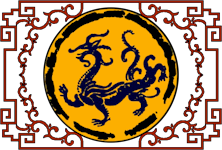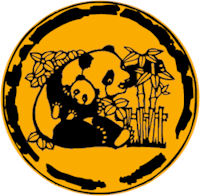
One of the most widely recognized symbols of China, Bamboo has shared a symbiotic relationship with the Chinese people since the dawn of civilization in China. It is thought that the eight basic strokes that comprise the entire Chinese written language are borrowed from the various shapes of the bamboo during its life cycle.
Bamboo is a type of grass and as such, can remain in an active life state, though repressed, during the winter months, followed by a three to four week growth period during spring. It is one of the fastest growing plants, and can sustain a rate of between 3 and 4 feet of growth per day during periods of growth. It is also known for its hardiness, able to grow in soil that is otherwise incapable of supporting other vegetative life. In fact, the mere presence of bamboo in some areas results in hostile soil gradually becoming more fertile, due to the nitrogen and other nutrients that bamboo rhizomes excrete during their maturation process.
So hardy is bamboo, that it was the first plant to grow in Nagasaki and Hiroshima, Japan, in the aftermath of the nuclear bombings. The first groves still exist and are part of the legacy of World War II.
Bamboo can be propagated by trimming the underground rhizomes and transplanting them to suitable areas. They do seed, but the process lends itself to one of the largest mysteries concerning plant life. Bamboo is prone to mass flowering- that is one stock of plants flower simultaneously, no matter where in the world they are located. So, if a rhizome is taken from a forest in Szechuan province, China and transported to Pittsburgh, PA in the US, when the population of bamboo flowers in Szechuan, China, the plant taken from the parent, now residing in Pittsburgh, will flower at the exact same time. When the bamboo flowers and produces fruit, the entire plant dies. The seeds contained within the bamboo fruit are then left with the purpose of renewing the bamboo's life cycle.
The bamboo has the longest interval between flowering periods of any other plant in the world- between 65 and 120 years. When the bamboo produces fruit, a notable increase in rodent population takes place and will tend to cause famine among nearby human settlements because the exploding rodent population will require more food. Because of this chain of events, the appearance of fruit on a bamboo plant is often associated with famine among the local cultures.
Bamboo is used in nearly every aspect of life in China. Even today, with modern materials such as steel and plastic with their properties as a reliable building material, bamboo is still the highest ranked and preferred choice in building materials in modern China. The oldest surviving and tallest wooden pagoda in China is 650 years old and stands 250ft. The oldest wooden structure in the world is a temple on the east coast of China, near Shanghai- it is one thousand years old. This only attests to the strength and durability of bamboo as an architectural material. The oldest bamboo used anywhere in China was found in the southern province of Anhui and was carbon-dated as being nearly 7,000 years old. It was a writing tablet and the characters could still be clearly read.
Before bamboo was boiled and pulverized to make the first paper in the world, it was cut into thin strips and tied together to form scrolls. The original scrolls upon which Confucius and Sun-tzu wrote their teachings on are able to be clearly read.
Just before serious growth starts, the shoots of the bamboo can be eaten. It is used for its flavor and nutritional content.
Bamboo is recyclable and looses little tactile strength in the process. In some cases, old or broken bamboo can be reformed into solid wood because the structure of the wooden grain can be 'spliced' onto other pieces to form very wide, very strong planks.

